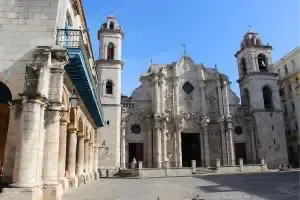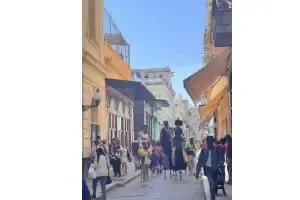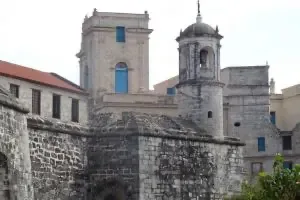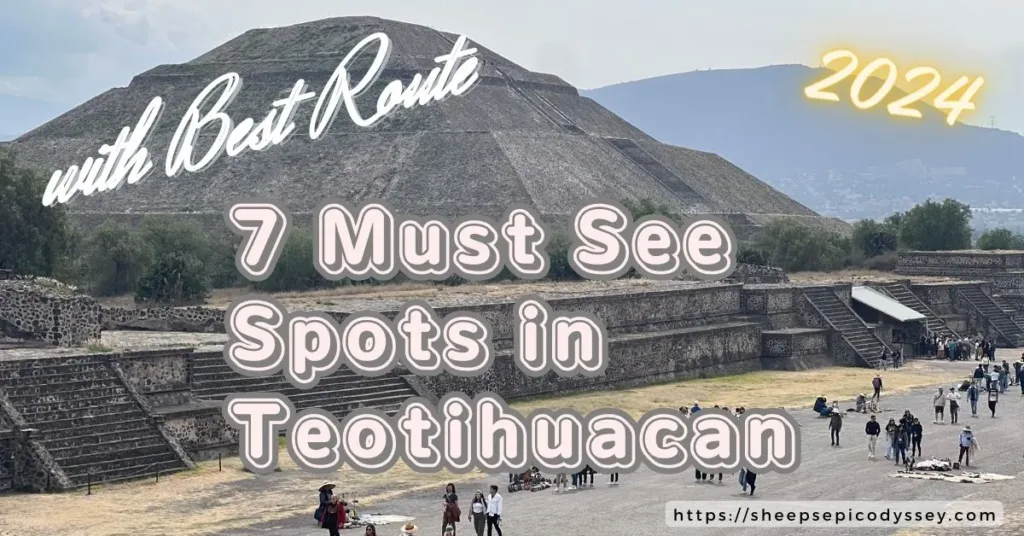Some of the links on this page may contain promotional content.
Cuba travel guides 2024 ! In this post, you will find helpful information to know before your Cuba trip, including airfare, lodging, SIM cards, currency exchange, credit cards, dining, and must-see attractions, all based on my recent journey.
Visiting Cuba has been on my Bucket List for what feels like forever! I just know that this is the perfect time to go because I believe that the tourism industry is going to take off and the society is poised for some major changes in the near future.
I hope that the information in this post will assist you in planning and getting ready for your trip to Cuba.
Please find below a list of topics related to a trip to Havana, Cuba:
≡ Table of contents
- 1. About Cuba
- > 1.1 Quick Facts
- > 1.2 Safety in Cuba
- 2. Cost of goods in Havana, Cuba
- 3. Flights to Cuba
- 4. Tourist card (Visa)
- 5. Accommodation in Havana, Cuba
- 6. Internet Access
- 7. Money Matters (Currency, Exchange Rates, Credit Cards)
- 8. Tourist Attractions in Havana, Cuba
- 9. My Favorite Restaurants in Havana, Cuba
- 10. Where and what to buy as souvenirs from Cuba?
- 11. Cuban Rum

Nice to meet you! I’m a Japanese traveler. I prioritize “cost-performance” and strive for the best experiences within a limited budget. So far, I’ve visited over 50 countries and cities. I’ve self-taught English and also have experience in language studies during my time in Taiwan.
Cuba travel guides 2024
1. About Cuba
1-1. Quick factors about Cuba
- Language: Spanish
- Currency: Cuban Peso (CUP)
- Capital: Havana
- Visa: Required (Tourist visa for 90 days)
- Religion: predominantly Catholicism and Afro-Cuban religions such as Santería
- Ethnicity: 25% European, 50% Mixed, 25% African
- Power outlets: Type A or B / Voltage is 220V
- Climate: Generally warm, tropical climate
1-2. Safety in Cuba
However, be careful if you’re in areas that are away from tourist spots. Just so you know, it’s kind of risky to go out at night in any country, but it is even possible to be robbed or pickpocketed in Havana during the late hours.
2. Cost of goods in Havana, Cuba
Based on my personal experiences during an 8-day trip to Cuba in 2024, here is some information on prices in tourist areas of Havana.
- When in the Havana tourist area in Cuba, remember that prices for goods and services may vary and negotiation is expected.
- Prices are listed as either in US dollars (USD) or Cuban Pesos (CUP)
- Calculated at an exchange rate of 1 USD = 270 CUP
Cost of goods in Havana, Cuba
From Martí International Airport to downtown Havana. | 30USD (for 2) |
Mineral water bottle 500ml | 100 CUP ~ 150 CUP |
Eat at restaurants | 3,000 CUP ~ 5000 CUP (for 2) ※11USD ~ 17USD |
Eat at local restaurants | 1,400 CUP ~ 2,200 CUP ( for 2) ※5 USD ~ 8USD |
Lobster | 2,200 CUP ~ 2,600 CUP ※8USD ~ 10USD |
Alcohol | |
・Mojito | 400 CUP ~ 600 CUP |
・Imported beer | 300 CUP ~ 400 CUP |
・Domestic beer | 400 CUP |
Ice cream | 30 CUP ~ 50 CUP (one scoop) |
A small-sized sandwich | 300 CUP for one |
45-minute classic car tour | 45 USD CUP for 4 pp (You might get it cheaper if you negotiate) |
SIM Card | please check “6. Internet Access” section |
Shared taxi from Havana to Trinidad | 45 USD / one person |
Ferry from Havana to Casablanca | 200 CUP / one person |
Christ statue in Havana | Free |
Che Guevara’s residence | 100 CUP / one person |
3. Flights to Cuba
Overview
CheapOair Yes
Skyscanner Yes
eDreams Yes
Kayak No
Expedia No
trip.com No
GoToGate No
kiwi.com No
Since I also planned to travel to Mexico, I purchased round-trip tickets from Japan (Narita) to Mexico City International Airport separately. Additionally, I bought separate round-trip tickets from Cancun International Airport to José Martí International Airport in Havana.
Departure from Cancun International Airport
Euroairlines : Cuba Flight ticket
I booked a flight from Cancun to Havana with airline called Euroairlines.
Upon my arrival at Cancun International Airport, I had trouble finding the Euroairlines check-in counter or information on flight information board, which caused me anxiety. Eventually, I managed to check in with Vivaerobus Airlines.
I believe that it may have been a codeshare flight operated by both Vivaerobus and Euroairlines. As my ticket matched Vivaerobus Airlines’ departure time, I asked the staff for help and was able to check in.
4. Cuba tourist card (Visa)

Overview
Be aware: ESTA
5. Accommodation in Havana, Cuba
Accommodation options in Havana, Cuba:
Casa Particular
“Casa Particular” translates to “private house” in Spanish. It refers to privately-owned accommodations where homeowners rent out rooms after meeting certain government-approved standards. It is basically like Airbnb. There are Casa Particular websites available, although some Casa Particular listings can also be found on Airbnb.
Airbnb
Similar to Casa Particular system, Airbnb allows you to book accommodations through its website. Local hosts offer apartments or houses for rent. The advantage of Airbnb is that you can check the review from other guests and the assurance of support in case of any issues. Your Cuban hosts can assist you with basic things you need.
Hotels
6. Internet access in Cuba
The information about internet access I’m sharing is based on the data I’ve collected and my personal experiences during my trip to Cuba.
The only telecommunication provider in Cuba is the state-owned company ETECSA (Empresa de Telecomunicaciones de Cuba S.A.). There are no internet cafes available in Cuba.
Ways to access the internet in Cuba:
Internet at Accommodations
Cuban SIM Card
Rates of SIM Card for Cuban Residents:
SIM Card for Foreign Tourists
- Tips
NAUTA Cuba Internet Card
NAUTA Cuba Internet Card
The official price of the NAUTA Cuba Internet Card
Where to buy NAUTA Cuba Internet Cards?
- ETECSA shops
Buying from an ETECSA shop is the most reliable way to get them at the official price, which is usually the cheapest. As mentioned earlier, it can be a bit challenging for tourists to enter ETECSA shops. You might have better luck at other ETECSA shops that are not in the touristy area. - Hotels
It seems possible to purchase NAUTA cards even at large hotels, but I’ve heard they can be expensive. - Black Market
Cubans go to ETECSA shops to buy NAUTA cards and then resell them to tourists in higher price. This method is more reliable than finding an ETECSA shop yourself and might be cheaper than the high prices at hotels. Make sure to check that the password on the back of the card hasn’t been scratched off before purchasing.
- Tips
There is a booth selling NAUTA cards at the official price (the local price, the cheapest peice) in the departure lobby of Terminal 3 of Jose Marti International Airport. The location is at the back of the terminal, in the area where the Aeromexico airport counter is located. I don’t know if they sell it in the arrival lobby, but it’s not difficult to move from the arrival lobby to the departure lobby, so if you really want to save money, you can buy it here.
One card for 25 CUP and good for 1 hour, and i bought 8 of them !!
Is the internet in Cuba fast ??
- SIM card
when I was using it, it was mostly 3G, and I often couldn’t connect to the internet indoors. - NAUTA cardSince you need to go to one of the wifi spot, I mostly used it outside, the internet speed was normal. I was able to use Instagram and Facebook smoothly.
7. Cuba trip: Money Matters
Money Matters Summary
- The main currency is the Cuban peso (CUP) or foreign currency (Dollar or Euro)
- Cuba’s official exchange rate is $1 = 120 Cuban Pesos (CUP)
- Cuba’s unofficial exchange rate $1 = 260 ~ 270 Cuban Pesos (CUP)
- Do not exchange money at airports, hotels, or CADECA (government-run currency exchange offices)
- It is best to ask your accommodation host where you are staying about currency exchange.
- You can exchange money at the unofficial exchange rate on the black market, but be careful.
- Foreign currency (Dollars, Euros, and Canadian dollars can also be used). It is better to bring foreign currency (especially Dollar or Euro)
- It is better to exchange money for Cuban peso (CUP) than to pay directly in foreign currency.
- In Cuba, the US dollar and the Euro are often treated equally at 1:1
Currency
Cuban peso exchange rate
The exchange rate between the Cuban peso and the US dollar has been fixed at 1 dollar = 24 Cuban pesos (CUP). Recently, the Cuban government raised the exchange rate to 1 dollar = 120 Cuban pesos (CUP) in response to the black market’s unofficial exchange rate.
In other words, the exchange rate of the Cuban Pesos (CUP) is much higher than the black market rate. The local economy appears to be running on this black market rate rather than the official rate.
Where to exchange money?
The hosts will often volunteer to exchange currency with you, and they have an incentive not to give you a bad deal or cheat you: you are staying with them!
Nevertheless, there are other options. While walking down the street, you may encounter people who ask if you would like to exchange money. Random people are probably slightly more risky than a person who is sitting in a fixed location, like a shopkeeper. Risk in this case involves the possibility of getting fake notes or currency, although this is not apparently a problem in Cuba and all of the currency I exchanged worked well at all of the places I tried to use it.
Be aware that exchanging money at hotels, airports, or CADECA (government-run currency exchange offices) you will get “official exchange rates” which will always be far less favorable than what you can get on the street or from your host.
Credit card and Cashing from ATM
With few exceptions, the only credit cards that can be used in Cuba are VISA or Mastercards that have not been issued by a US financial institution.
Even if the card is issued outside of the US, it cannot be used overseas if the payment is made through a US financial institution.
In Cuba, credit cards are rarely accepted except in major hotels and expensive shops, and you certainly won’t get a favorable price on goods at the official exchange rates.
Therefore, I highly recommend that you bring enough cash (dollars or euros) with you for the entire duration of your stay.
It is possible to receive cash advances using a credit card, but please check with your credit card company in advance to see if your contract allows for cash advances within Cuba.
- Tips
In Cuba, the US dollar and the euro seem to be treated equally on a 1:1 basis.
There were some stores where you could pay 1 dollar or 1 euro, so there is no need to go out of your way to exchange dollars to euros or vice versa.
There are many shops where you can pay in Cuban pesos (CUP) or foreign currencies, but it is often better to pay in Cuban pesos (CUP).
Be ready to calculate exchange rates with your cell phone’s calculator app!
8. Tourist attractions in Havana, Cuba
- You can check the location on Google Maps from the link

Malecon street
Stretching along Havana's coast, El Malecón is the perfect place to admire the beautiful coastline and sunsets. There are also walking trails and parks where locals gather and spend some relaxing time. Westerners will also be surprised to see that many of the old buildings directly facing the waterfront on Malecon are in disrepair and seemingly abandoned.

Old Havana
Havana's Old Town is known for its historical monuments and colorful buildings. Famous tourist attractions include the Plaza de la Catedral.

Obispo
A pedestrian street in Old Havana. Calle Obispo is a lively area lined with historic buildings, cafes, restaurants, galleries, and shops. It is a popular place to look for souvenirs and enjoy a meal. Cheap ice cream and bottled water--a must for tourists walking on hot Havana days!--can be found here as well.

Revolution Square
An important historical site in Cuba. The monumental José Martí monument and the bronze statue of Che Guevara symbolize the spirit of the revolution. It is also known as a place where political meetings and events are held.

National Capitol of Cuba
This impressive building in Havana is one of Cuba's iconic landmarks. This building was modeled after the U.S. Capitol Building in Washington, D.C.

Central Park Cuba
A beautiful park located in the center of Havana, with the statue of Jose Marti towering in the center. Near the park, there is a street with famous hotels, theaters, and restaurants.

Plaza de San Francisco de Asís
This plaza has existed since Spanish colonial times. The square is surrounded by the Baroque church of San Francisco de Asis, as well as other historic buildings, restaurants and cafes.

Havana Castle of the Royal Force
Built in the 16th century as a defensive base in Havana Bay. Currently used as a museum, you can enjoy Cuba's military heritage and beautiful scenery.

Christ of Havana
A marble statue of Christ. This statue stands on the top of Casablanca Hill and overlooks the entire Bay of Havana.
9. Restaurants, in Havana, Cuba
During my trip to Havana, Cuba, I visited some affordable restaurants with good food.
You can check the location on Google Maps from the link.
Restaurant for tourists
- You can check the location on Google Maps from the link

La Bodeguita del Medio
This is a restaurant and bar that was loved by Ernest Hemingway. Founded in 1942, cocktails such as mojitos and daiquiris are popular. The "signature wall" where customers can leave messages is also famous. The mojitos here are a bit expensive.

Bar Floridita
This bar is also known for being frequented by Hemingway. Here you can enjoy Cuban music and dancing while enjoying delicious mojitos and cocktails.

La Lluvia de Oro
The restaurant is located on Obispo Street and has a lively atmosphere. Prices were reasonable. The grilled lobster and fish that I ordered were very delicious. After the meal, I ordered more mojitos and enjoyed a live band.

La Esquina de Cuba
There was a balcony where you could enjoy your food while looking at the scenery and people. The seafood plate with tomato sauce and Ropa Vieja that I ordered was very delicious. It was about $15 for two dishes and two drinks, so it was a good value for money.

Lo De Monik
I had a Cuban sandwich here. It was very tasty and typical of what people would imagine "Cuban Sandwiches" to be before eating them. The breakfast menu was also extensive. The only negative was that there were a lot of flies inside the restaurant, more so than other places I ate…
Local restaurants
- You can check the location on Google Maps from the link

Donde Adrian
This is located a little far from downtown Havana. It was a store that even local Cubans would go to. Enjoy traditional Cuban cuisine. One plate costs about $5-6.

Coppeplia
This is a famous ice cream parlor that has enjoyed national popularity since it opened in 1966. It is visited by many tourists and locals and has become a cultural icon of Cuba. I can't say that the customer service is good, but the price is 60 CUP per scoop (20 cents USD)!

Galiano
This is a people's restaurant. It's located far beyond Cuba's Central Park, but it's a place where Cubans also go to get ice cream and sandwiches. Hours are 12 pm - 5 pm. The location is not on Google Maps and is difficult to find, but it is located at the corner of San Rafael and Galiano streets. I pinned it on Google Maps.
10. Where and What to buy souvenirs ?
There are two places you might want to check out for buying souvenirs.
I bought some fridge magnets as souvenirs and mementos from my 2024 trip to Cuba.
- You can check the location on Google Maps from the link.
Where you can buy souvenirs
- Almacenes San José Artisans’ Market
A handicraft market in Havana, Cuba. This market is located next to the Port of Havana and is built using historic warehouse architecture. Traditional Cuban handicrafts, artwork, and souvenirs are sold here. For tourists, it is one of the fun places to browse local arts and crafts.
- Flea Market Craft Market
This is a craft flea market located on Obispo Street, which is crowded with tourists. Handmade crafts and artwork are on sale. There was jewelry, cigar boxes, knick-knacks, art, jewelry, fabrics and more handcrafted by local artists and artisans.
Note: Please check your country’s policies for bringing in Cuban goods.
11. Cuban Rum
Santiago de Cuba Rum
This rum is made using Bacardi’s original formula.
Bacardi Rum & Cuba🇨🇺
Bacardi rum is originally a Cuban rum, founded in 1862 in Santiago de Cuba by Don Facundo Bacardi Masso.
Facundo’s wife, Doña Amalia, proposed the idea of a bat as a symbol, and it became known locally as “el ron del murciélago”– the rum of the bat.
Bacardi rum gained a reputation for its high quality and quickly became popular.
However, in 1959, after the Cuban Revolution, the Bacardi family and company had their Cuban assets confiscated by the Cuban government and were forced to leave the country.
After Fidel Castro came to power during the Cuban Revolution in the 1960s, Bacardi hid his company’s secret recipes, trademarks, and assets in the Bahamas. It eventually moved its operations to Puerto Rico and Mexico and prospered in trade with the United States.
You won’t find Bacardi in bars or stores in Cuba today. The dominant brand in Cuba is Havana Club, which was also owned by Bacardi at one time.
To this day, the Cuban government continues to produce rum using the Bacardi family’s recipe and under the traditional name “Sandiego de Cuba”.









ピンバック: 【2024キューバ旅行🇨🇺】知っておきたい情報を全て解説